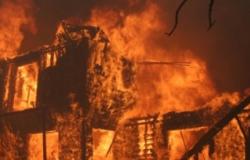
To be able to decide and act quickly and efficiently in a complex world, individuals rely on mechanisms that reduce information in a meaningful way. Instead of holding a set of partially contradicting cognitions, individuals construct coherent interpretations or stories to make sense of the available information using interactive activation. Interactive activation describes cognitive processing as bidirectional propagation of activation among simple processing units, which allows individuals to integrate large amounts of information quickly and with little cognitive effort. However, interactive activation also has important downsides that can prevent individuals from detecting looming disasters and can even contribute to their emergence. I describe the functioning of interactive activation and how it can be modeled using connectionist networks. Later I explain how interactive activation causes a set of biases (e.g. coherence effects, overconfidence, hindsight bias and status-quo bias) that make it hard to detect looming disasters and how these biases lead to discontinuities in understanding of problems and rapid behavioral switches that can contribute to the emergence of disasters.